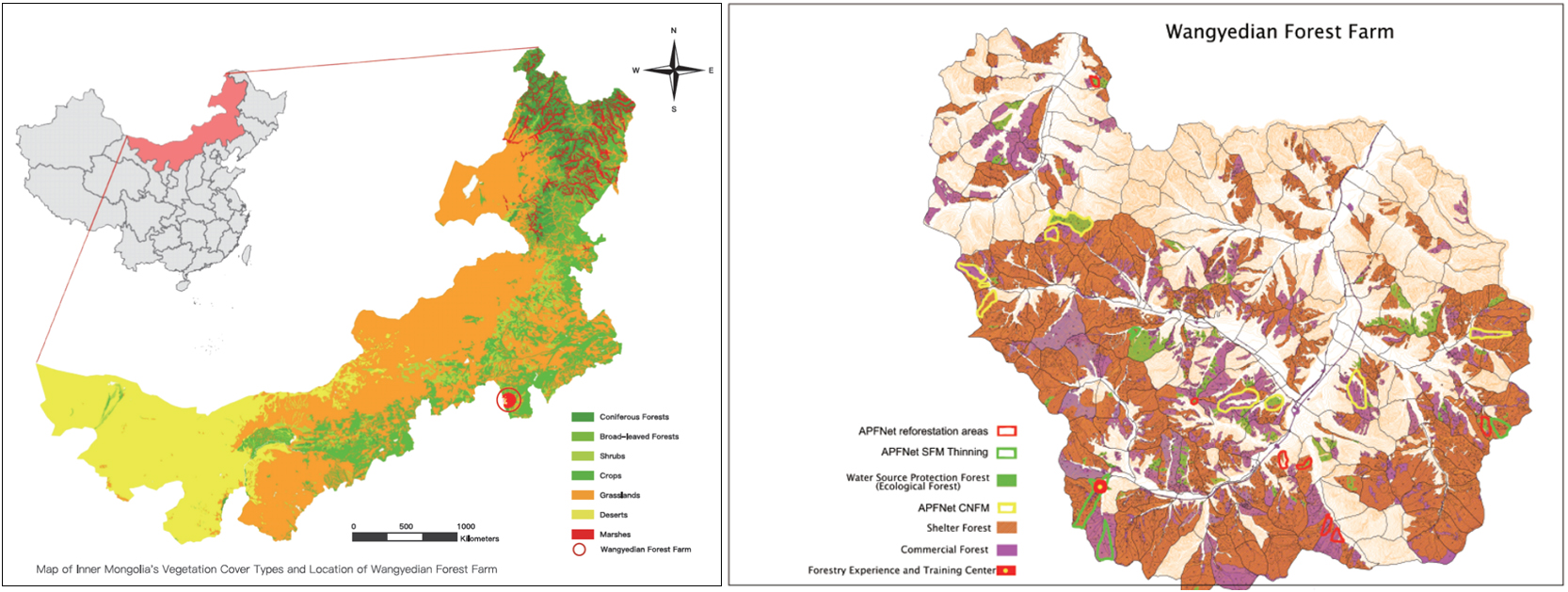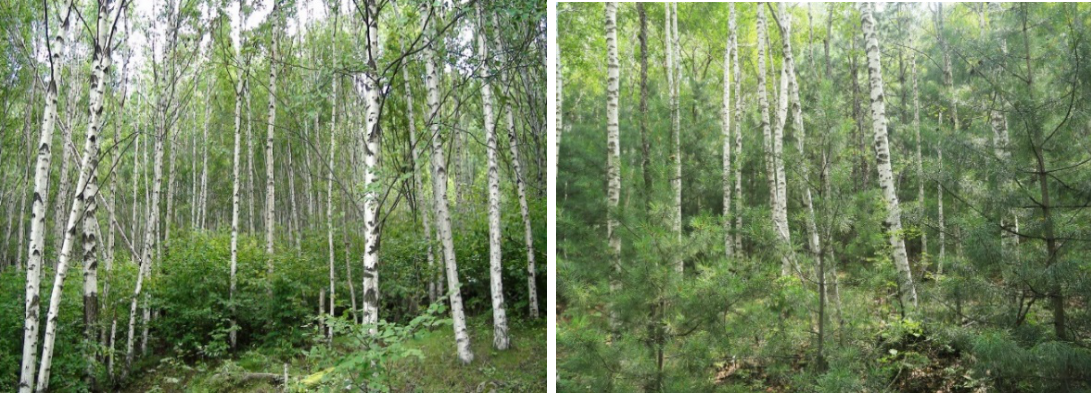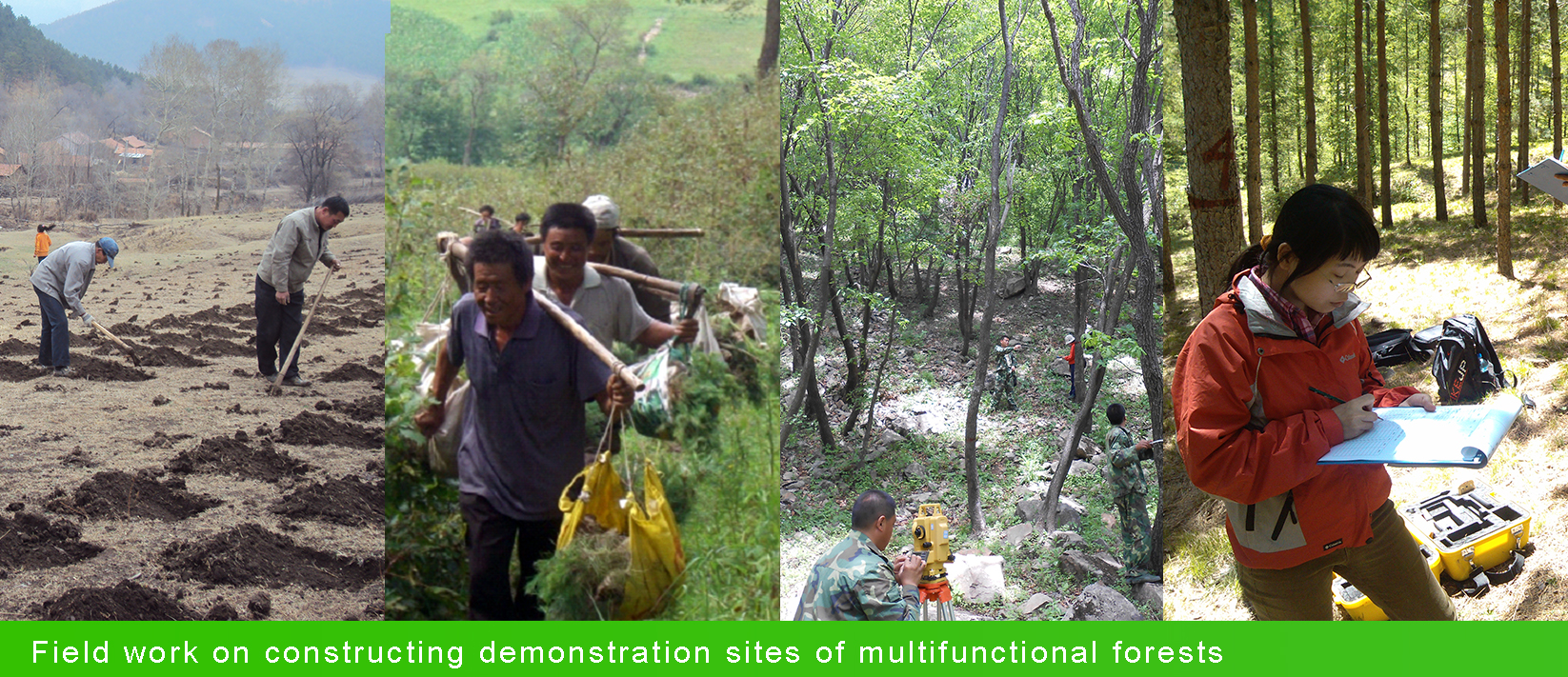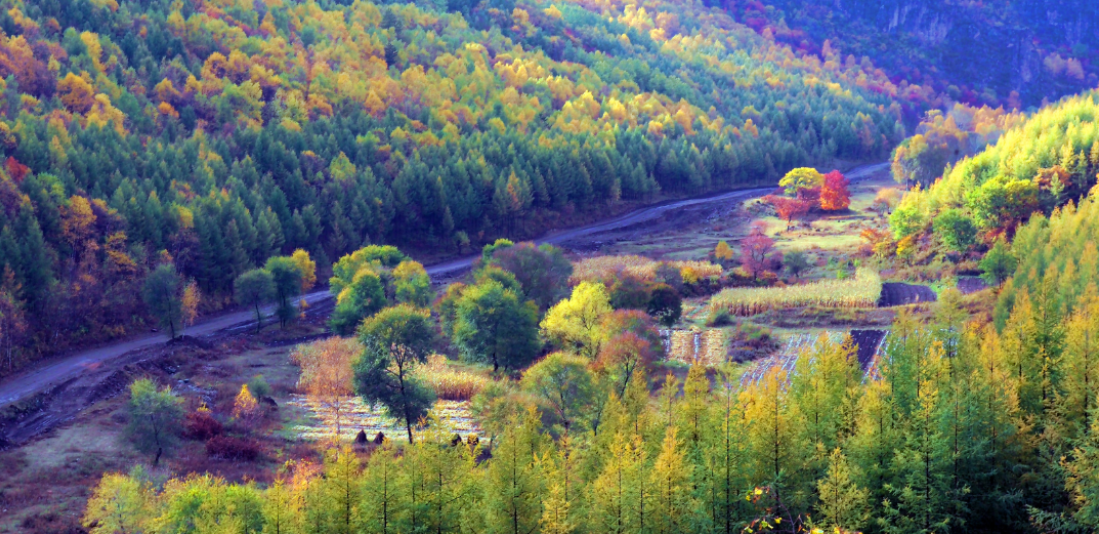Project title: Construction of multifunction forest management demonstration sites – Phase I [2011P3-INM]
Supervisory agency: Chifeng Forest Bureau, Inner Mongolia, China
Executing agency: Wangyedian Forest Farm
Budget in USD (total/APFNet grant): 1,639,686/1,213,286
Location: Wangyedian Forest Farm, Chifeng, Inner Mongolia, China
Project duration: September 2011–May 2015
Objectives: Construct demonstration sites of multifunctional forests in different forest types; Formulate a protection and collection plan for non-timber forest products; Construct community co-management demonstration sites on the forest farm; Promote sustainable forest management and improve management capacity on the forest farm.
Expected outputs: Development of information management systems for forest resources, general affairs and finances for a forest farm; Management of 466 ha of forests with different forest types using close-to-nature forest management approaches; Grow non-timber forest products, such as edible fungi, to promote forest multifunctional management; Demonstration sites of community co-management on the forest farm; Construction of a Multifunction Forestry Training Centre, training 200 technical personnel and 400 forest farmers each year.
Project background
Figure 1. Wangyedian Forest Farm. Photo: Li Fuming
Over recent decades, China has established one of the largest reforestation programmes globally. While the re-establishment of green cover in China is not finished, it is time to look beyond just planting trees. Both historical conditions as well as a lack of knowledge and available technologies have limited the range of silvicultural practices used for re-establishing forests. As a result, China’s current planted forests largely consist of monocultures, with impeded ecosystem functions and limited biodiversity. Such is the case in Wangyedian Experimental Forest Farm in Inner Mongolia. Government authorities have now recognized the need to introduce new management practices that value community participation and utilize multiple forest functions, to ensure the sustainable production and health of the forest. In 2011, APFNet launched the first phase of the project “Construction of multifunctional forest management demonstration” in Wangyedian Forest Farm, to demonstrate the multifunctional forest management approach and explore how economic, social and environmental benefits can be balanced and enhanced, both at the farm and in the wider region. The project developed forest management plans and demonstration plots to be managed under multifunctional close-to-nature forest principles and employed co-management mechanisms for the forest farm and the local community. To ensure the success of this cooperation, building the capacity of local communities to participate in the management of forests was undertaken.

Figure 2. Location of Wangyedian Forest Farm
Project featured topics
Promoting sustainable forest management
♦
Planning forest and non-timber forest products management
Good forest management is the result of thorough and comprehensive planning. Long-living and slow-growing forests require a long-term vision to ensure the right measures are applied early on. The project supported Wangyedian Forest Farm to develop a stand-level operational ten-year forest management plan (2013–2022), incorporating sustainable forest management principles. A separate management plan for non-timber forest products was also developed.
♦
Close-to-nature forest management

Close-to-nature forest management (CNFM) originated in Germany and is based on the idea of managing a forest by working with nature instead of against it. The results are mixed, structurally diverse forests that are in a much better position to deliver a multitude of forest ecosystem services such as water filtration, timber and non-timber forest products. The CNFM principle was applied in Wangyedian with the goal of transforming monoculture forests into mixed forests. The monoculture forests consisted largely of larch (Larix principis-ruprechtii) and Chinese Pine (Pinus tabuliformis) plantations. By applying different CNFM techniques, such as target tree selection, cutting competitor trees, assisted natural regeneration or enrichment planting with local species, the forest can be slowly converted into a multi-aged, diverse forest with a structural and species composition mimicking that of a natural forest in later successional stages. Figure 2. Before (2011, left) and after (2014, right) thinning Betula platyphylla. Pinus koraiensis has naturally regenerated well. Photo: Wangyedian Forest Farm.
Three different forest types were treated with CNFM methods:
|
Forest type |
Area |
Age |
|
Prince Ruprecht’s larch (Larix principis-ruprechtii) plantations |
226.7 ha |
young to mature |
|
Chinese Pine (Pinus tabuliformis) plantations |
173.3 ha |
young to mature |
|
Asian white birch (Betula platyphylla) natural secondary forest |
100 ha |
middle aged to mature |
Improving local livelihoods and participation of communities
♦ Forest farm and community co-management system
Wangyedian Forest Farm, together with APFNet, established a forest farm and community co-management system. The village, Andangou (按丹沟), with about 2,800 people, was selected as a demonstration village. A village co-management and coordination committee was established and a ten-year village-level co-management plan was developed. As parts of the forest land belonging to the villagers are under their full jurisdiction, the plan was based on the villagers’ management goals, in consultation with the forest farm. Overall, the forest area managed under this plan covers 1,200 ha and is divided into 15 management units. Forest rangers from the forest farm and villages patrol and manage those forests together.
♦ Forest fire prevention and forest fire crew
In order to effectively prevent and control forest fires, the forest farm set up a forest fire crew, a team of forest fire rangers monitoring the forest farm, divided into six sub-areas. This crew consists of employees from the forest farm and people from local communities, together creating a semi-professional firefighting and prevention team.
♦ Non-timber forest products
Wangyedian Forest Farm has a huge range of non-timber forest products, including 741 vascular plant species and 162 macro fungi species, including both edible and medicinal fungi. In 2012, with the support of APFNet, the forest farm and Aromatic Fungi Ltd signed a cooperation agreement to work together in “symbiosis”. The forest farm provides thinning and logging slash of suitable tree species to the mushroom farm and local communities. This type of slash is necessary for making mushroom spawn and grow. For the local communities, Aromatic Fungi Ltd provides an important work opportunity, employing 20 people as full-time staff and about 85 cooperative members to manage various aspects of mushroom growing or collecting wild mushrooms.



